|
In collaboration with The Federation's Art Action Day marking one year since Trump's inauguration, my paperworks class made small collage books that engaged some aspect of culture deemed important to them. The group urges that art is essential to democracy and this little project allows each student to put their voice out into the world on particular topics. Students picked themes of multilingualism, homelessness, immigration, religion, among others.
Students collected collage materials, assembled them into this easily reproducible low-brow book form. We then scanned them, had multiples printed via a photocopier. Students are then to "shopdrop" them around the city. Shopdropping is defined as "To covertly place objects on display in a store. A form of "culture jamming" s. reverse shoplift, droplift." This seemed like a good subversive form of dissemination that connects to the theme of the work and Art Action Day. Students are to then document the shopdropping process with their phones. Tomorrow, on Art Action Day, I will post images of the books themselves and the shop dropping.
0 Comments
Since it is the beginning of the semester (2nd week actually) I thought I would share this little piece that is widely known. I generally go over this in the first or second day of class. Its funny how this is a continual process to me. I have read this a hundred times, but each time, it challenges me in a different way.
RULE ONE: Find a place you trust, and then try trusting it for awhile. RULE TWO: General duties of a student - pull everything out of your teacher; pull everything out of your fellow students. RULE THREE: General duties of a teacher - pull everything out of your students. RULE FOUR: Consider everything an experiment. RULE FIVE: be self-disciplined - this means finding someone wise or smart and choosing to follow them. To be disciplined is to follow in a good way. To be self-disciplined is to follow in a better way. RULE SIX: Nothing is a mistake. There's no win and no fail, there's only make. RULE SEVEN: The only rule is work. If you work it will lead to something. It's the people who do all of the work all of the time who eventually catch on to things. RULE EIGHT: Don't try to create and analyze at the same time. They're different processes. RULE NINE: Be happy whenever you can manage it. Enjoy yourself. It's lighter than you think. RULE TEN: "We're breaking all the rules. Even our own rules. And how do we do that? By leaving plenty of room for X quantities." (John Cage) HINTS: Always be around. Come or go to everything. Always go to classes. Read anything you can get your hands on. Look at movies carefully, often. Save everything - it might come in handy later.  Formation Matters takes its name from a simple, but evocative play on words. If taken literally, the phrase suggests the relevant topics or concerns relating to formation. Rhetorically however, the phrase implies the overall importance of formation. In a third turn of the phrase, it also hints at the substance or physicality of the artists’ creations through which viewers engage the initial two turns of the phrase.* This plurality of meaning allows for the same in the directions of work chosen for the exhibit. While all the artwork in some way deals with memory and tradition, it also embodies a variety of conceptual approaches. Both Donovan Widmer and Patrick Luber investigate the dynamic and formative relationships between religion and culture. Whereas Katelyn Reiter and Mary Kocal explore the power of family narratives within their own lives. My own work, and that of Cherith Lundin, raises questions about the ambiguities and possible loss of traditions. Micah Bloom’s recent work on the 2011 Minot flood haunts the space between these two positions as a metaphor by regarding his childhood formation and the passing of the paper book. Additionally, while all artists work from particular traditions and influences, be it media or school, John Kaericher’s work often makes explicit visual ties to his mentors. In these ways, the exhibit offers another voice into the conference conversations. Building around the theme of Teaching Theology and Handing on the Faith, the exhibition is rooted in the belief that the visual arts can be remarkable catalysts within these conversations, as well as profound symbols and mediations of the Divine. While the church has historically drawn upon the devotional and didactic potential of art, the engagement and contemplation of contemporary art allows divergent points of affirmation and provocation of its traditions. *The beginning is a modification of Liz Well's introduction to her wonderful text, Land Matters First off, these are not my thoughts but I really appreciate and agree with Bill Caraher's comments and so have decided to repost them. In many ways, as I look back on my time in graduate school, particularly my 2nd round, I unconsciously followed many of these tips. Also, if you should be following Bill's blog...he is full of good thoughts and words.
Ten Tips for a New Graduate Student April 25, 2013 This evening I’m taking out a couple of my students who have been accepted into graduate school for next year. I threatened (offered?) to give them my list of ten tips to being a successful graduate student (also know as “things that I wish I had done in graduate school or did, but only by accident). I riffled through my harddrive and found a few versions of it and decided to compile them into one list. This list is directed at prospective graduate students in my field and it reflect my mistakes and successes more than anything else. 1. Have fun. Graduate School is fun. Resist the urge to rush through the program toward an uncertain future. Don’t dawdle by any means, but make sure to savor your time in graduate school. Chances are that your graduate school environment will be the most supportive, robust, and dynamic that you experience throughout your career. Enjoy it. 2. Take all the gloomy press about the job market with a grain of salt. Graduate school in the humanities is like minor league baseball. You do it because you love the game and because you believe you have what it takes to make it to the big leagues (such as they are …). Don’t do it if you feel entitled to an academic position at graduation or out of some false belief that the minor league system is designed to give every prospect an equal chance at success. Do it because you love what you’re doing and it’s a remarkable opportunity to do it for a few more years. 3. Read as much as possible. Get in the habit of looking at the major journals in your field and reading reviews. Read bibliographies. Get to be friends with your librarian. Anything you can do to know what is being published and what it is about. (The arrival of review volume of the Journal of Roman Archaeology remains one of the highlights of my year.) 4. Work harder than everyone you know and collaborate with people smarter than you. My experience is that these two things are related. Smart people have better ideas, get more opportunities, and generally have more fun. Part of the reason that they are successful is they have less smart collaborators and colleagues who work really really hard. Work hard and smart people will let you ride their coattails. 5. Write all the time. I write for at least an hour every day, even if it’s just working on my blog and each year, I find it easier to write more. I might not be developing new ideas or getting smarter, but I am definitely better and bringing my ideas from my eddying and swirling brain to the page. Ideas only really count when they are on the page. Writing a blog or a journal offers a simple way to maintain writing discipline and move ideas from thoughts to words. It also offers you a chance to produce a positive presence on the web. 6. Develop a digital ecosystem. Find ways to stay organized on your computer, back up your harddrive, develop ways to use mobile devices to make your life easier. Try new software to streamline your workflow. 7. Develop some ancillary skills. I was lucky enough to be a sufficiently marginal field archaeologist to have a chance to develop some skills in GIS and database management. While this began as a way to keep me from somehow messing up field work, it has since put me in the position to shape field procedures, interpret data, and produce analysis. Despite only ever taking one archaeology course in my life, I have turned using various database tools into opportunities to direct my own projects and to publish the results. If you can, take classes outside your department and discipline. 8. Balance professional development and taking risks. There will always be pressure to publish and present your work and it begins in graduate school (earlier and earlier these days!). At the same time, remember that graduate school is where you can take risks, learn your limits, and experiment with new approaches and ideas. Despite the feeling that the stakes in graduate school are high, they are much higher when you get your first academic position. 9. Spend time at the American School of Classical Studies at Athens. This is the greatest of the foreign research centers for American graduate students. It has an amazing alumni network, brilliant facilities, and a solid program. The School as an institution and its faculty take graduate education seriously. If you’re working in the Eastern Mediterranean, do what you can to spend time at the ASCSA. 10. Be interested in everything. There is tremendous pressure these days to professionalize and focus. While focus and discipline are good and will ensure that you move through your program with pace, maintaining academic interests outside your narrow field of dissertation represents an important risk management strategy. If your particular, specialized graduate research doesn’t end up being the “next big thing”, you’ll have other irons in the fire. One last tip … listen to and trust your mentors.  One of the many suprising things that I have found this year in teaching is my love of building PowerPoints! Well...that is when I have time. I know PowerPoints often get overused and misused, but when presenting on art it is a great tool to show a lot of different work and artists. To build a great presentation takes time...collecting the images, arranging them, cueing notes etc. Today, I've been working on a PowerPoint presentation for next week when I speak to a Gender Studies class on images of female adolescence in contemporary photography. While this is not in anyway a conclusive list, the work covers Sally Mann, as well as her unfortunate lumping in with Jock Sturges and David Hamilton. But I also cover the important work of Lauren Greenfield, Rania Matar, Melissa Ann Pinney, Allessandra Sanguinetti, Lauren Gaskell to name a few. This semester I also made a monumental Powerpoint for my alt. process class on photography as object/sculpture/installation. At that time, I began collecting images in folders for my own records. Often, I will collect more than I need from a particular artist, but that way I have them in a file ready to go should I need to refer to them again. For this new presentation, I am doing much the same thing. I hope, that over the years, this habit of image collection will continue to grow and thereby speed the proces as well.  2 weeks ago I took my Advanced Photography class out on a little field trip to this wonderful little church near Rugby, ND. With the help of Dan Smith, an area photographer who knows the region well, got us permission to enter the church and a nearby homestead. There are many abandoned houses and buildings in ND. I have mixed feelings about them. They are great photographic material...detail and decay. But there is much more to North Dakota than a decaying set communities on the upper prairies.  Last week I had the priveledge to attend the joint meetings of the College Theology Society and the National Association of Baptist Professors of Religion. I believe this was my 5th meeting that I have attended. One week ago today I was skimming through my paper in preparation to present it at 9:30. This was also my first real trip to Texas (clipping the corner en route to New Mexico in 8th grade didn't count). It was somewhere in the low 40's in ND when I left at 7am but was around 90 when I got to San Antonio at noon. I will say that I doubt Texas will ever be for me. Between the rattlesnakes and the heat, and other crawling things, it makes me thankful to be a resident of the upper midwest where the winter prohibits much of those forms of life. That aside, it was a nice visit and a great conference. Between AAR and CTS meetings, I have now attended enough conferences to be at the point where I no longer feel guilty about skipping sessions. I have sat through enough sessions that were either or both outside of my knowledge range or just over my head that it really was a waste of my time. I now take advantage of naps. I was thankful that my paper was given the first session slot, because I could sit back and enjoy the rest of the conference. I have been on the last Sunday session and not only is attendence usually down as people are already heading home but the anxiety of pushes me to noodle my paper right up until I present. My paper was entitled "Jesus Gave Me This: Deciphering the Overlap of Spiritual Language in the Creative Process" The paper largely grew out of my experiences with a Christian artist group who's members would speak about the source of their creative idea with theological language suggesting both personal revelation and inspiration. They used these terms in a variety of ways from meaning a general urge to create but also that God spoke to them and gave them the creative idea and even created the work through them. The paper then goes on to explore a variety of issues such claims make for both theology and the arts. Since I have returned I have been working on edits to the paper so it can be submitted for consideration in the conferences annual volume. While it is nice to be asked to submit the paper, the quality of papers suggests that it is not likely to be accepted. Oh well...the struggles of editing are always good practice for developing ones writing. My experiences of conferences are usually a mixed bag. I am often inspired by the work that is going on and how it relates to mine. But I often feel so intellectually inadequate among so many well educated people. Of course many of them are well along in their careers and have books and PhD's. It is about this time when I go back to my room to take a nap which usually rights the world again. The book publishers tables are always a highlight as are the socials and the meals out with friends that I get to see only at this conference. Some conferences can be stuffy and stiff, but this conference is always warm and welcoming. It is a great place to try out new stuff because people are affirming and encouraging, particularly for graduate students. If you looking for a conference, particularly if you are interested in either Baptist or Catholic theology or ecumenism, then CTS is a perfect conference to check out. And a plug for next year...its at Creighton in Omaha Nebraska. As a graduate student at UND, who also lives on campus, and took a significant amount of credits over the summer during the MFA program, this is one of the happiest days of the year. Not only do things transition to a different pace of life and season of fun things to do, the undergraduates students, for the most part, are gone. The studios open up and are generally quiet to get a lot done. I've wondered over the past few years is it troubling that as a future educator that I am so relieved when students leave? I know faculty are ready for their breaks too. I suspect that I will be as well when I am teaching. Now though, as a graduate student, I suspect it is pure selfishness. Not in a mean spirited way, because many of the undergrads are great to have around. But there is something to having those workspaces all to oneself. And since I dont have money for a press and studio of my own, UND's will have to suffice until that time. For all my friends out there teaching and struggling to finish grading...strength and peace be with you.
A few years ago I had the great opportunity to teach a theology and film course at Sioux Falls Seminary. It was my last semester of working there as an admissions counselor before we moved to North Dakota for me to pursue the MFA. Now that I am done with the MFA and have enrolled into a MA in History program here at UND, I may have the opportunity once again to teach at SFS. I approached Dr. Susan Reese at the seminary to see if she would be interested in co-teaching a course on vocation and film. So together we crafted a syllabus and submitted a proposal. I am glad to say that it was approved a few weeks ago. So, now begins the fun work of catch up reading and re-reading on the two conversations and how they will be brought together.
In that first class, one week of the semester we looked briefly at the idea of vocation and watched Billy Elliot and The Apostle. I suspect both will be making a return showing in the syllabus, but we are exploring a few others as well. I've been excited about the idea of teaching lately...perhaps it is the "out of place" feeling I have being in a course in a new discipline. But perhaps there is something else going on too. Perhaps my heart is changing on the idea of further study and the desire to teach sooner rather than later...it certainly pays better than being a graduate student. There is an irony at play here it seems that this course on vocation seems to bringing about in the way of unsettling the ideas of my own vocation. To be continued... |
Ryan StanderArchives
January 2018
Categories
All
|
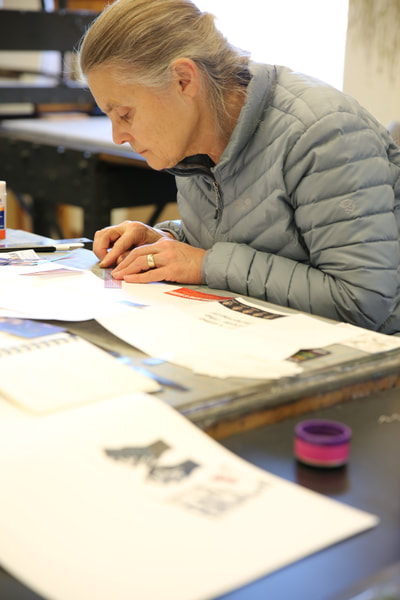




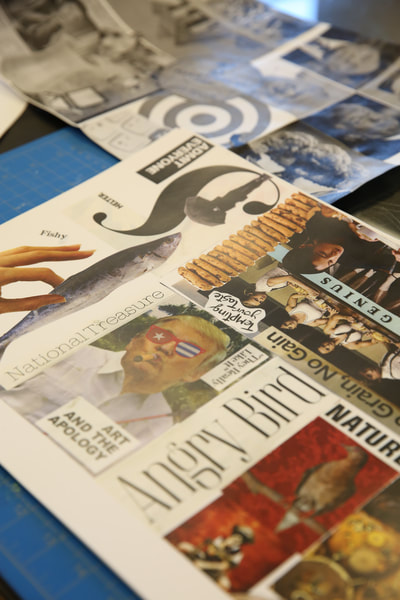



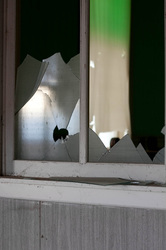
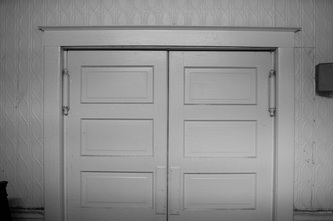
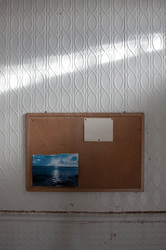
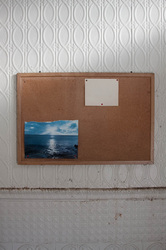







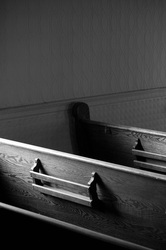

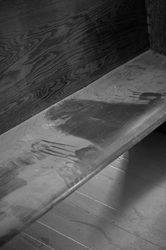
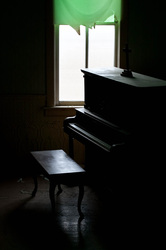



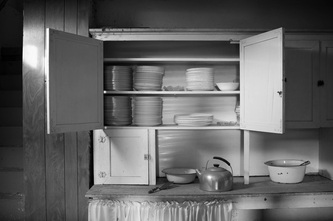


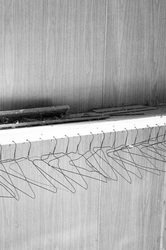

 RSS Feed
RSS Feed
